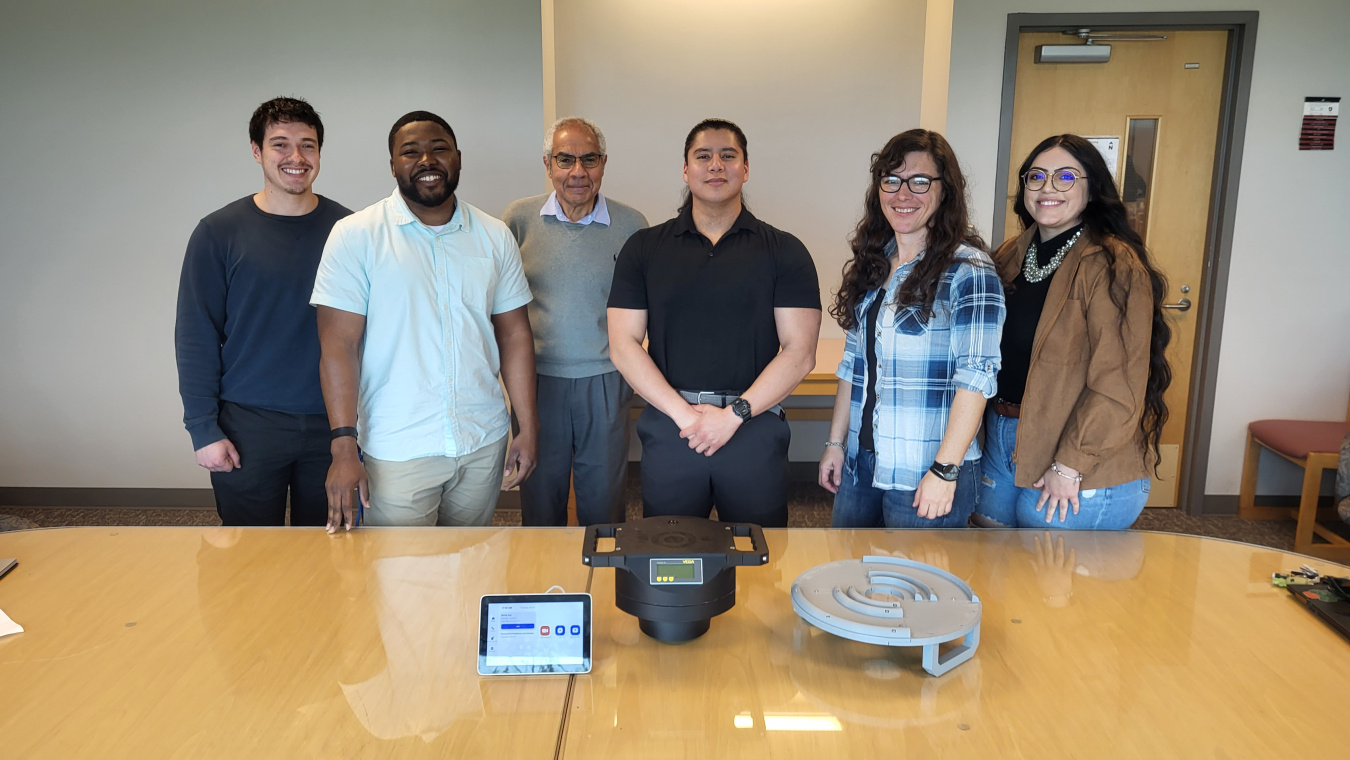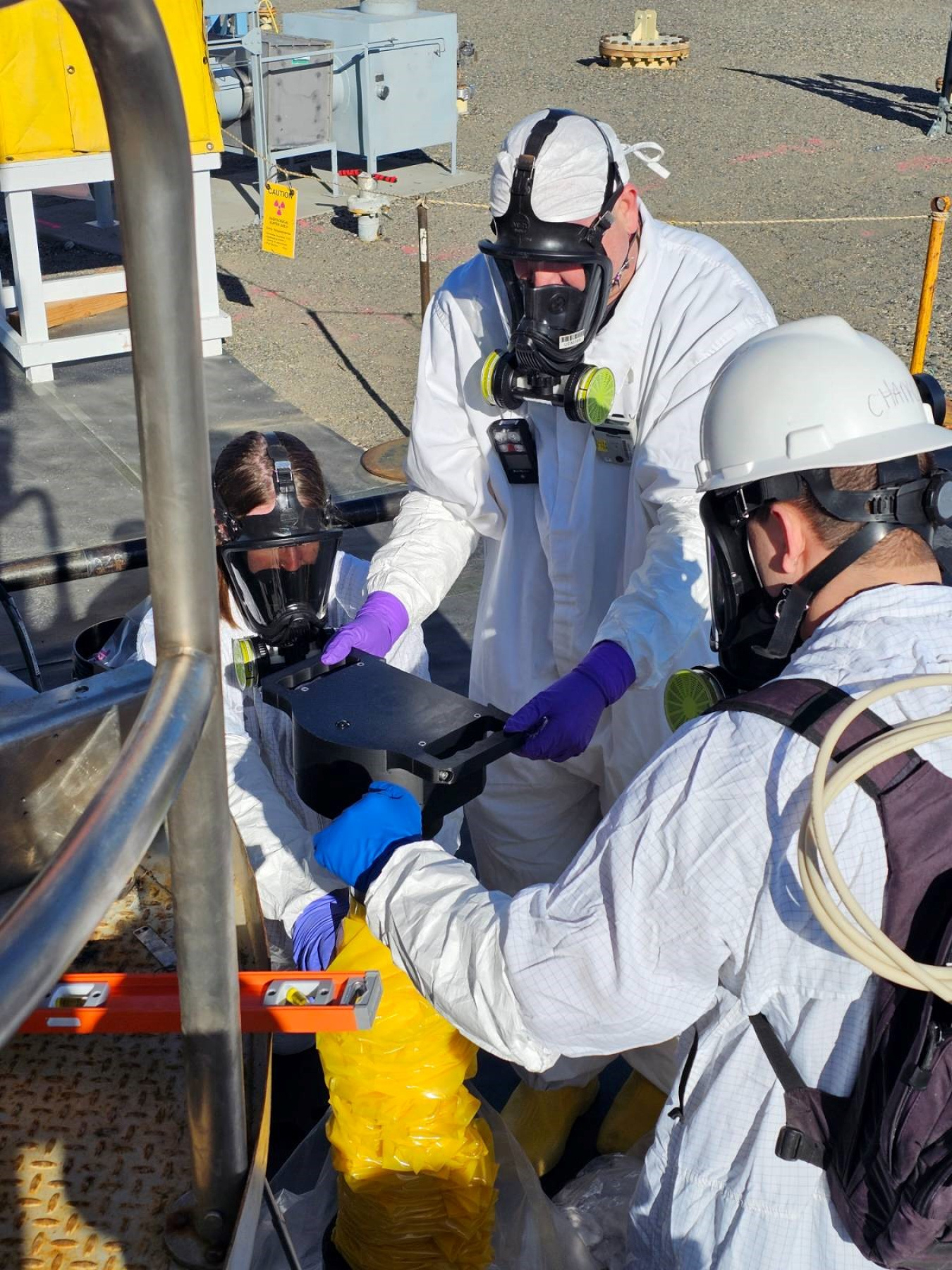A partnership between a U.S. Department of Energy Office of Environmental Management (EM) contractor and Washington State University (WSU) is supporting the growth of future professionals while advancing cleanup priorities at the Hanford Site.
Office of Environmental Management
April 23, 2024
Students from the Washington State University campus in Richland, Washington, worked with engineers from U.S. Department of Energy Office of Environmental Management contractor Washington River Protection Solutions to develop a waste-depth monitoring tool as part of their senior project.
RICHLAND, Wash. — A partnership between a U.S. Department of Energy Office of Environmental Management (EM) contractor and Washington State University (WSU) is supporting the growth of future professionals while advancing cleanup priorities at the Hanford Site.
Washington River Protection Solutions (WRPS) and WSU engineering students have developed a safer and more efficient way to measure the depth of radioactive and chemical waste in Hanford’s large underground tanks.

Workers recently used a new tool developed by Washington State University students and engineers with contractor Washington River Protection Solutions that uses radar to measure the depth of waste in underground tanks at the Hanford Site.
Students from the WSU Tri-Cities campus designed and developed a waste depth detector with guidance from WRPS engineers. Workers recently used the tool during field operations in Hanford’s Tank Farms.
“Seeing this senior project move from conception to use in the field is exciting,” said Paul Schroder, EM Hanford deputy assistant manager for Tank Waste Operations. “These partnerships provide students with real-world experience and contribute to the Hanford cleanup mission.”
The tool uses radar to measure the depth of the waste. It is a safer and more efficient method than the previous process, where crews lowered a piece of pipe through the top of the tank until it contacted the waste surface.
Doug Reid, a WRPS mechanical engineer, expressed satisfaction with the new method, and emphasized the importance of working with students.
“It was a privilege to help develop this new method while mentoring a team of mechanical engineering students,” said Reid. “This WSU senior project will have a lasting effect on advancing our safe and efficient operations at Hanford.”
-Contributor: Derek Miceli
To receive the latest news and updates about the Office of Environment Management, submit your e-mail address.

